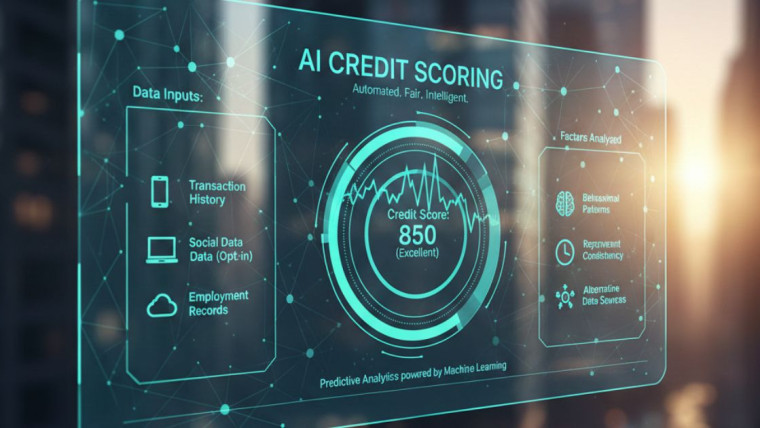The digital payments landscape is evolving rapidly, reshaping how we buy, send money, and make payments. But with progress comes risk — particularly online, where fraudsters constantly develop new ways to exploit digital vulnerabilities. These attacks can result in stolen identities, financial losses, and damaged reputations.
That’s where AI-driven fraud detection steps in. With machine learning and real-time analysis, AI is revolutionizing how we secure financial transactions. Whether you’re part of the fintech revolution, run a business that relies on online payments, or simply want to understand how digital transactions stay safe, this guide is for you.
The Rise of Fraud Detection in FinTech
Fraud detection has become one of the most critical components in the fintech industry.
Digital payments are booming, with projections estimating a global market of $14 trillion by 2027. But with that growth, fraud is also increasing. In 2023 alone, payment fraud led to global losses of at least $41 billion.
Cybercriminals now deploy advanced scams like phishing, account takeovers, and synthetic identity fraud. In addition to financial loss, companies risk losing customer trust and brand reputation. In today’s digital-first world, even a single breach can have long-term consequences.
To counter this, businesses are increasingly turning to AI-powered fraud detection systems, which use machine learning algorithms and real-time data analysis to detect and stop fraud before it causes harm.
What is AI-Powered Fraud Detection?
AI-based fraud detection systems rely on machine learning (ML) and big data analytics to detect and prevent fraudulent transactions.
Unlike traditional rule-based systems, AI models can:
- Learn from data to identify fraud patterns
- Adapt quickly to new fraud types
- Minimize false positives, ensuring real transactions aren’t mistakenly flagged
These systems not only detect fraud more accurately but also provide actionable insights, enabling financial organizations to stay ahead of emerging threats.
Advantages of AI for Fraud Detection
Real-Time Analysis
AI can scan millions of transactions in milliseconds, spotting anomalies as they happen — not after the damage is done.
Behavioral Pattern Recognition
It tracks and learns behavior, identifying unusual patterns (e.g., multiple logins from different regions) that may suggest fraud.
Reduction in False Positives
By reducing errors in flagging real transactions, AI improves the user experience and avoids unnecessary declines.
Scalability
Whether you’re processing hundreds or millions of payments, AI systems scale seamlessly, maintaining high performance and accuracy.
How Artificial Intelligence Is Reshaping Fraud Detection Across Functions

Customer Service
AI reduces the manual load on customer support. It can automatically assess transactions, flag only the high-risk ones, and answer common queries.
Example: AI bots like ChatGPT can instantly inform users why a transaction was flagged, avoiding confusion and delays.
Data Analysis at Scale
AI digs through enormous data sets to identify fraud trends.
Tool Example: FICO Falcon uses historical, cross-industry data to enable adaptive fraud prevention.
Supply Chain Management in Payments
AI ensures that every party in the payment chain meets safety standards. It can verify suppliers and monitor abnormal activities.
Compliance and Regulation Reporting
AI tools help automate regulatory reporting, keeping businesses audit-ready and reducing compliance risk in fraud cases.
Marketing Risk Management
AI can identify ad fraud, where bots mimic user clicks. It also helps ensure marketers are reaching genuine users, not fake traffic.
AI and Tools to Disrupt Fraud in FinTech
Here are some AI-powered tools leading the charge in fraud prevention:
Feedzai
- Focused on digital banking fraud
- Real-time detection with smart-device monitoring
- User-friendly dashboard for tracking
Sift
- Prevents account takeovers and payment fraud
- Real-time machine learning with zero customer friction
Ravelin
- Ideal for high-volume e-commerce
- AI identifies fraud patterns in complex transactions
ComplyAdvantage
- Tracks global watchlists
- Ensures compliance with KYC and AML regulations
Why Companies Need To Implement AI Fraud Prevention Now
Avoid Reputational Hiccups
Today’s consumers expect strong cybersecurity. Implementing AI-driven fraud detection builds trust and loyalty.
Stay Ahead of Fraud Trends
Fraud techniques evolve rapidly. AI helps companies keep up by continuously updating detection models.
Cut Costs
AI prevents losses from fraud and reduces operational costs by eliminating manual reviews and increasing efficiency.
The Future of Payments Secure with AI
AI-powered fraud detection is no longer just a trend — it’s quickly becoming the standard for securing digital payment systems. In fact, fraud detection using AI in banking is transforming how financial institutions protect customer data, reduce false positives, and detect threats in real-time.
By embracing these advanced technologies, businesses are creating safer, more seamless payment experiences — and positioning themselves as leaders in the future of secure finance.








How Open Banking APIs Are Revolutionizing Digital Finance?
Digital Twin Technology in Finance: How Virtual Models Are Transforming Risk Management
Open Banking Revolution: Transforming Digital Finance and Empowering Consumers
What Is Digital Faxing for Financial Institutions
Digital Twin Technology in Finance: How Virtual Models Are Transforming Risk Management
The Future of Personal Finance: Autonomous Finance and AI Money Management
AI Credit Scoring: Revolutionizing SME Banking and Digital Loans
AI Fraud Detection: How Banks Prevent Financial Crime in Real Time